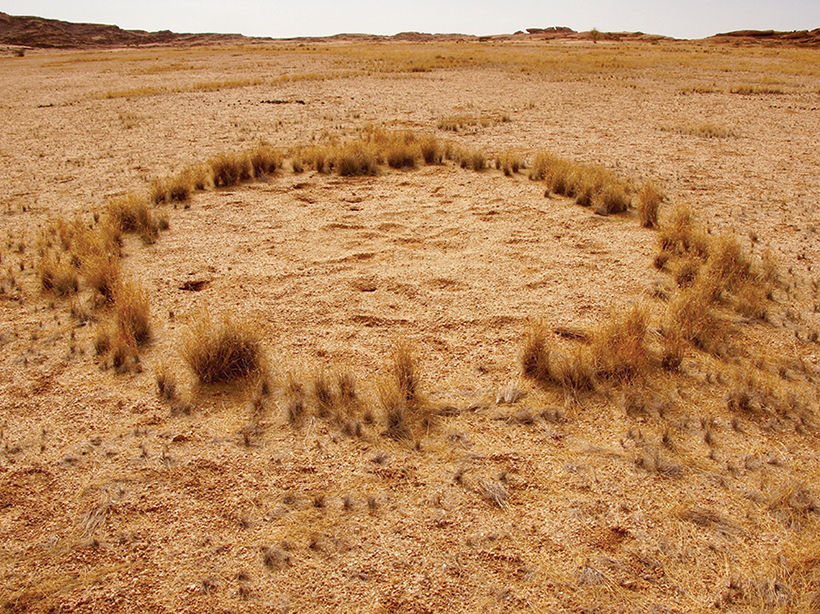Source: Journal of Geophysical Research: Biogeosciences
In just a couple places on Earth, namely, the scrubby deserts of Australia and Namibia, mysterious natural formations known as “fairy circles” dot the dry landscape. Some unknown force or phenomenon causes these bare patches to appear amid the sparse vegetation, arranged in a honeycomb-like configuration.
These fairy circles are named for their similarities to mushrooms’ “fairy rings.” Although the name brings to mind mystical sprites, scientists have produced several possible, secular explanations for them. But the truth of how they form remains murky and is a subject of intense debate. Are they caused by small amounts of natural gas seeping into the soil, as proposed by South African scientists in 2011? Or are they perhaps a result of harvester termites’ foraging and nesting habits, as a University of Hamburg researcher posited in 2013? Or as hypothesized by an international team in 2015, is it a quirk of desert environments that vegetation organizes in ring patterns?
Ravi et al. revisit the idea that plants self-organize to find water by studying the interactions of water, soil, and vegetation in Namibian fairy circles. The matrix of fairy circles in the Namib Desert, where the study took place, spans more than 1600 kilometers of arid grassland.
The team tested and compared three sets of soil samples from the bare interior, highly vegetated edge, and moderately vegetated exterior of each fairy circle. For each sample, they conducted infiltration experiments to observe the rates of moisture soaking into the soil, measured the levels of soil moisture and grass biomass, and analyzed the sizes of individual soil grains.
The researchers observed nothing to suggest that termites or any kind of foraging animal had an effect on the formation of the fairy circles in their study sites. But in every instance they found coarser grains of soil inside the circles and finer grains of soil along the vegetated circle edges.
Their explanation is that plants, competing for scarce water resources, naturally gravitate outward, forming rings of vegetation. Then, as wind and water redistribute sediment around, finer grains of sand become entangled in the vegetation at the edges while coarser grains remain inside the circles. The differing soil textures affect the natural distribution of water and biomass, which amplifies the contrast between the soil composition in the inner areas and that at the edges, creating a visible pattern.
The fairy circle debate is far from over; the team advises further continuous studies of wind, water, soil, and biological processes. But, for now, this study puts scientists one step closer to consensus. (Journal of Geophysical Research: Biogeosciences, https://doi.org/10.1002/2016JG003604, 2017)
—Sarah Witman, Freelance Writer
Citation:
Witman, S. (2017), Mysterious “fairy circles” continue to enchant scientists, Eos, 98, https://doi.org/10.1029/2017EO071017. Published on 05 April 2017.
Text © 2017. The authors. CC BY-NC-ND 3.0
Except where otherwise noted, images are subject to copyright. Any reuse without express permission from the copyright owner is prohibited.

